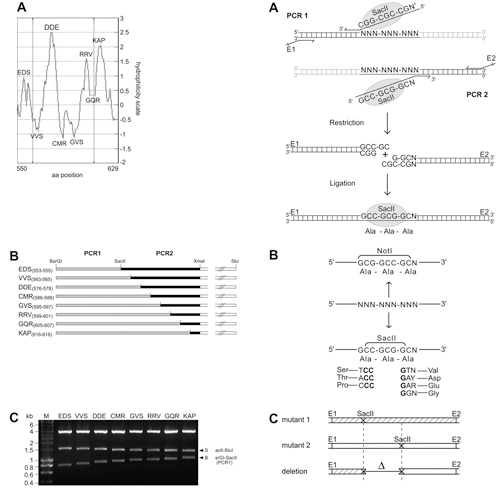A mutagenesis strategy combining systematic alanine scanning with larger mutations to study protein interactions
09-Nov-2007
Site-directed mutagenesis (SDM) of target DNA is an invaluable tool to study protein structure–function relationships. Alanine-scanning mutagenesis has been successfully applied to systematically map functional binding epitopes. Substitution of target amino acids with alanine removes all side chain atoms past the b-carbon and does not introduce unusual backbone dihedral angle preferences. Therefore, alanine scanning is particularly useful for assessing the contribution of charged residues on the protein surface without disrupting the folding of its core. This approach requires the production of large numbers of point mutants by SDM. Numerous SDM methods have been described (reviewed in Refs.), and commercially available kits offer fast protocols based on oligonucleotide primers harboring the mutation. However, most strategies do not include a selectable marker to distinguish mutant clones from wild-type clones, and when they do so the procedure becomes significantly more laborious and time-consuming because it requires either two cycles of transformation in different bacterial strains or transfer of the target DNA sequence to and from a specialized vector. In addition, most of these procedures are not suited to generate large sequence alterations. Methods based on type IIs restriction enzymes allow precise replacement of individual nucleotides or codons and either selection for mutant clones or generation of larger mutations, but not both possibilities together. Again, when selection for mutant clones is possible, multiple restriction, ligation, fill-in, and transformation reactions are necessary and suitable restriction sites relatively close to the mutagenesis site are required. Other PCR-based approaches allow generation of point and larger mutations and rapid screening for mutant clones but involve amplification of the entire plasmid with consequent risk of introducing additional mutations. Here we describe a simple, fast, and inexpensive strategy to generate alanine substitutions as well as deletions, duplications, insertions, and larger replacements while retaining the ability to screen for mutant clones by restriction analysis.











